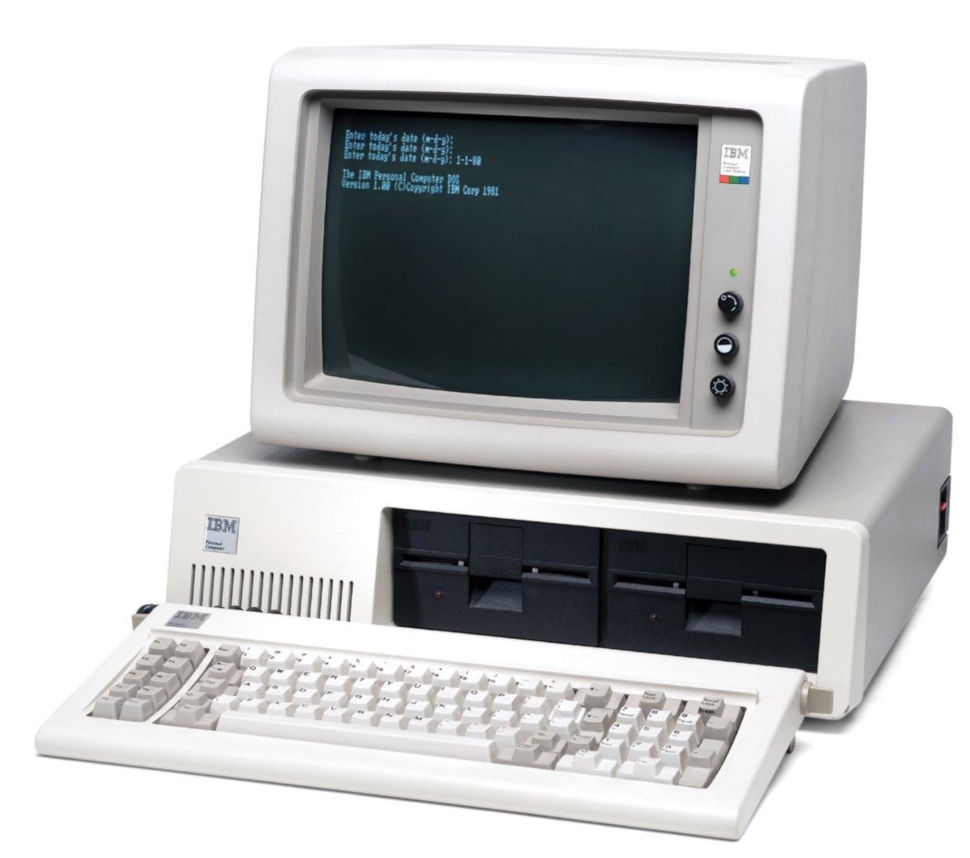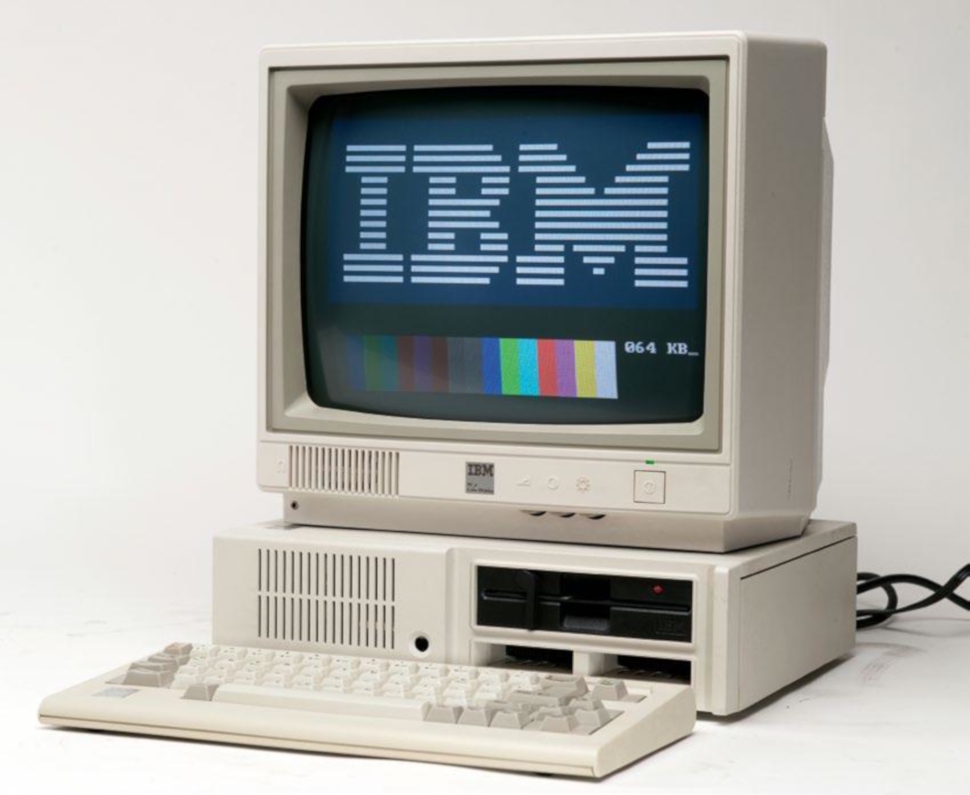A comprehensive history of the PC
A detailed look at the emergence and evolution of the personal computer
On to the software
With the hardware sorted, the burden of developing the operating system was largely outsourced to Microsoft, with IBM offering consumers the joint-venture PC DOS.
The final machine was dubbed the IBM Model Number 5150. This moniker would be immediately forgotten, for in the minds of the press it was really IBM’s Personal Computer that was about to launch.

After a 12-month development, IBM announced its new Personal Computer on 12 August 1981. The $1,565 base model included 16KB of RAM, CGA graphics and an input jack, relying on the user to provide a cassette deck – disk drives were optional and far more expensive than tape.
Rivals such as RadioShack and Apple were unconcerned. Steve Jobs bought one to dissect and was unimpressed by some of its old-fashioned tech.
In its hubris, Apple took out a full-page ad proclaiming “Welcome, IBM. Seriously.” But it failed to recognise the weight a company like IBM carried with businesses.
Even though IBM’s product was inferior in many ways to its cheaper competitors, businesses saw IBM as a safe bet, with excellent customer support.
Within a year, the PC overtook the Apple II as the best-selling desktop computer. In 1983, two thirds of corporate customers standardised on the PC as their computer of choice, with only nine percent choosing Apple – and by 1984, the PC’s annual revenue had doubled Apple’s.
Sign up to the TechRadar Pro newsletter to get all the top news, opinion, features and guidance your business needs to succeed!
IBM surprised the industry by breaking its own traditions. Not only did it allow service training for non-IBM personnel, but it published the PC’s tech specs and schematics to encourage third-party peripherals and software.
Within a couple of years, the PC was the new standard for desktop computers, spawning a massive sub-industry of peripherals and expansions.
In 1982, the PC was updated to IBM’s XT (eXtended Technology) standard, removing the cassette jack and adding a 10MB hard disk. It was the first PC with a hard disk as standard.
August 1984 brought IBM’s next major release, the PC/AT (Advanced Technology). Sporting a 6MHz Intel 80286 (aka 286 – no one used the ‘80’ prefix any more), it came with 256KB of RAM, expandable up to 16MB.
Initial models were limited to CGA and monochrome, but IBM’s new 16-colour EGA standard was soon introduced, allowing for 16 colours at 640x350. This was another step toward the PC we recognize now, with things like standardised drive bays, motherboard mounting points and the basic keyboard layout we now take for granted.
Although a hit with businesses, the first PC was too expensive for home users. The base model’s price wasn’t too outlandish, but it didn’t include a monitor or floppy drive; a decent 64KB model with a floppy drive and monitor was more than $3,000 (over $8,000 in today’s money).
Rivals smelled opportunity, and with an open architecture, it wouldn’t be long before IBM clones would arrive.
The PCjr
The PCjr looked promising: an Intel 8088 CPU, CGA Plus graphics and the kind of sound chips used by Sega consoles. IBM promised a home machine with PC compatibility, improved graphics and sound and a lower price of $1,269. Consumers adored the wireless keyboard, and it was IBM, the king of computing. Pundits thought the PCjr would destroy the competition, but on release it was universally panned.

A Commodore 64 was a third of the price, faster, with better graphics, and a huge software library. The PCjr’s strange hardware and optimisations also meant it was only partially PC-compatible, failing gamers and business users alike. What really riled consumers was the appalling rubber chiclet keyboard: a relatively expensive computer – from a company known for quality keyboards – was lumbered with something found on $99 budget micros.
Initial sales were a disaster, but a campaign of discounts, ads and upgrades (particularly to the keyboard) turned things around, making the PCjr a mild success. Nevertheless, its reputation was damaged, and it was cancelled in 1985.